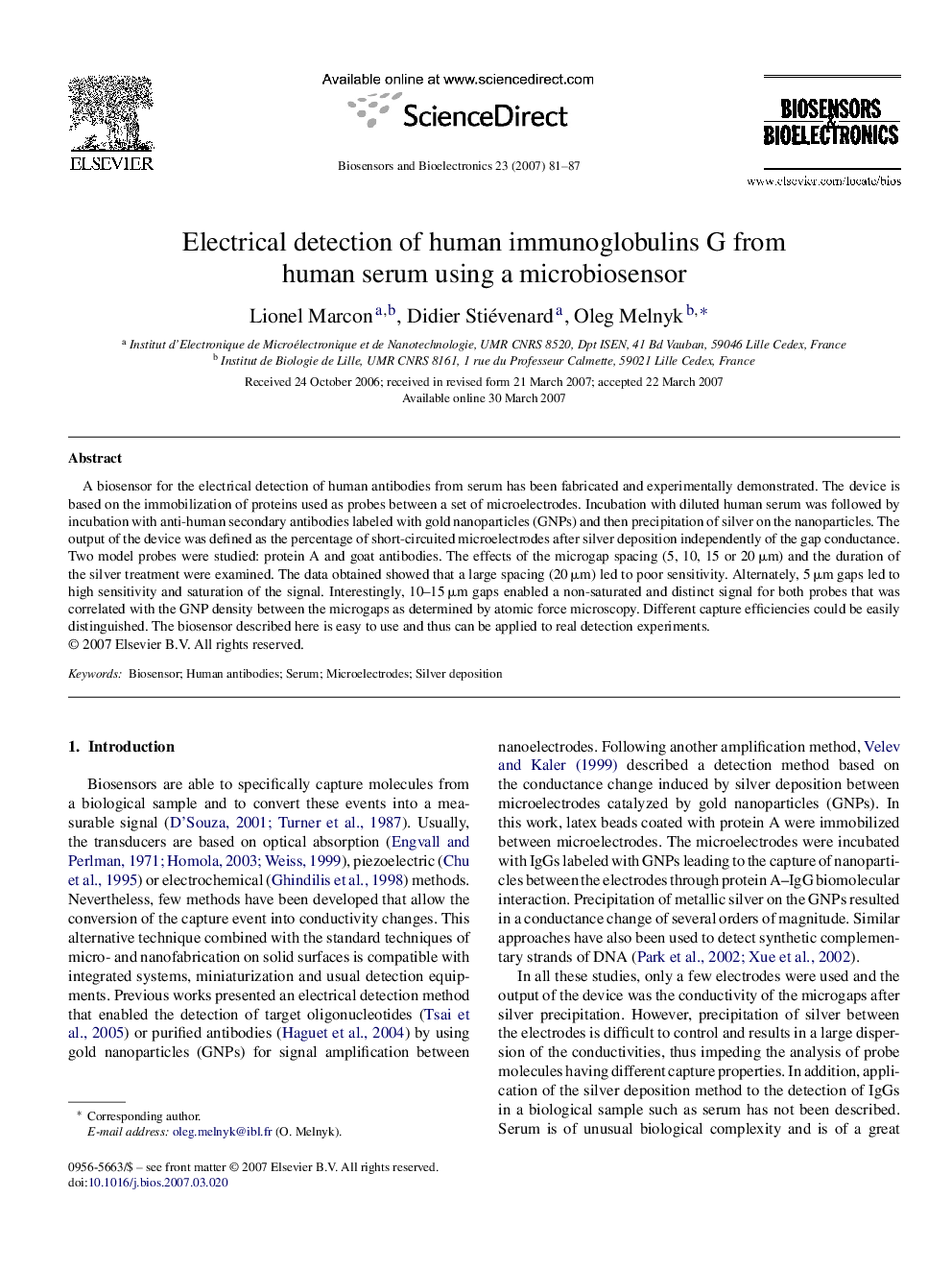| Article ID | Journal | Published Year | Pages | File Type |
|---|---|---|---|---|
| 870175 | Biosensors and Bioelectronics | 2007 | 7 Pages |
A biosensor for the electrical detection of human antibodies from serum has been fabricated and experimentally demonstrated. The device is based on the immobilization of proteins used as probes between a set of microelectrodes. Incubation with diluted human serum was followed by incubation with anti-human secondary antibodies labeled with gold nanoparticles (GNPs) and then precipitation of silver on the nanoparticles. The output of the device was defined as the percentage of short-circuited microelectrodes after silver deposition independently of the gap conductance. Two model probes were studied: protein A and goat antibodies. The effects of the microgap spacing (5, 10, 15 or 20 μm) and the duration of the silver treatment were examined. The data obtained showed that a large spacing (20 μm) led to poor sensitivity. Alternately, 5 μm gaps led to high sensitivity and saturation of the signal. Interestingly, 10–15 μm gaps enabled a non-saturated and distinct signal for both probes that was correlated with the GNP density between the microgaps as determined by atomic force microscopy. Different capture efficiencies could be easily distinguished. The biosensor described here is easy to use and thus can be applied to real detection experiments.
